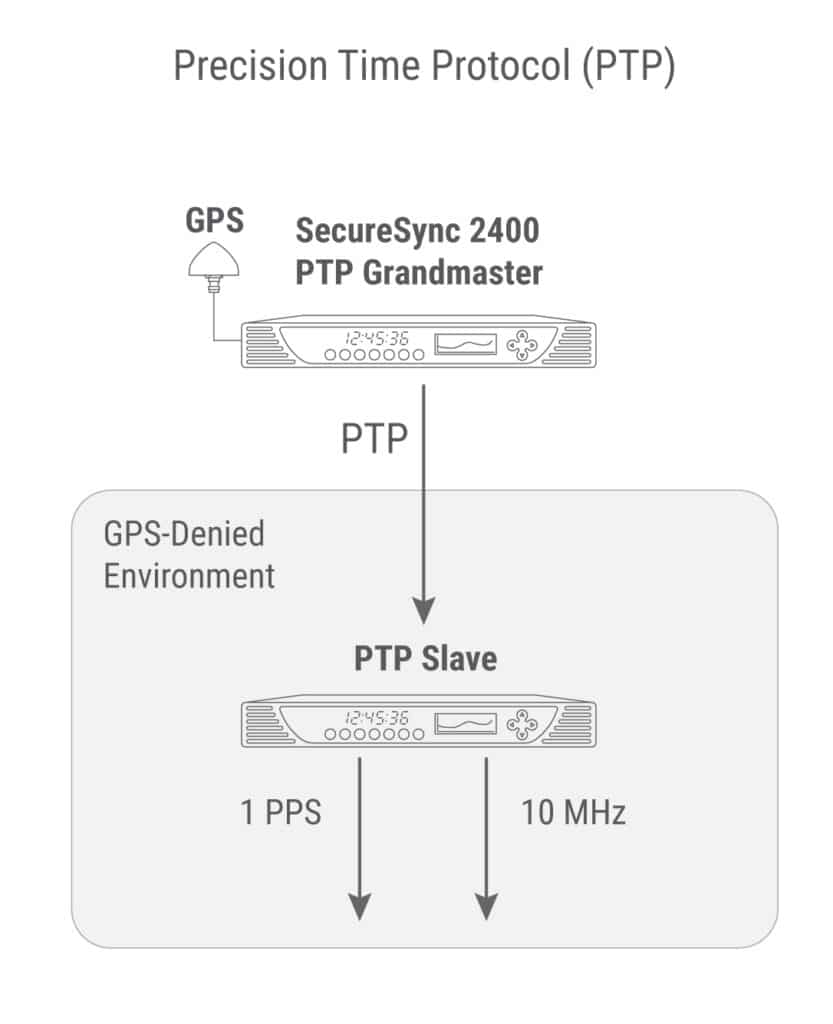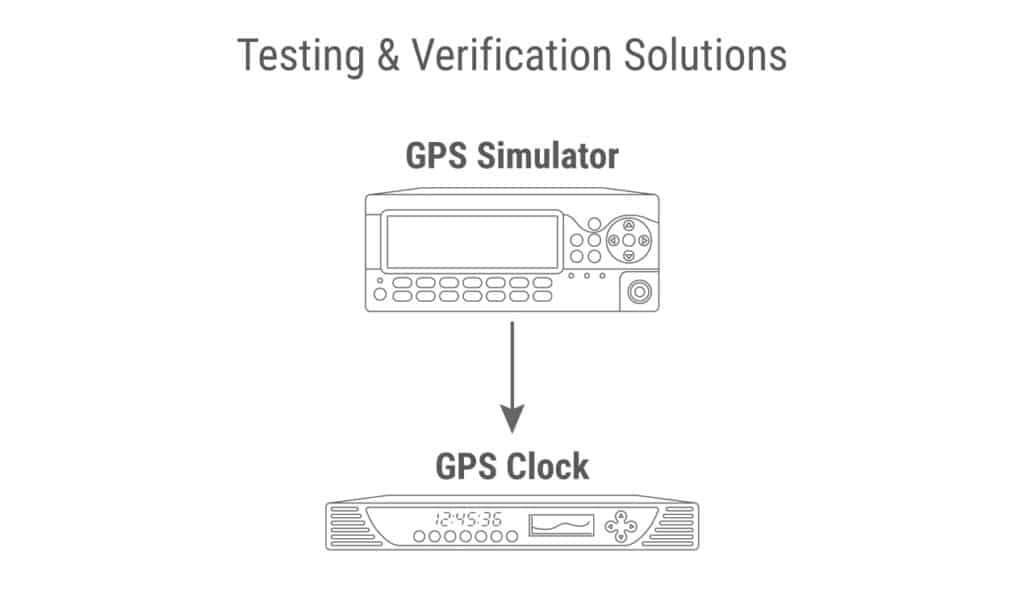
# White Papers
Cost-Effective Synchronization for Digital Broadcast
Around the world, as digital TV and radio broadcast transmission networks are being built-out for the first time, or current systems are being upgraded to provide new services, synchronization is playing as large a role as ever. In Europe, Middle East, Africa and Southeast Asia, broadcasters are looking to the DVB-T2 standard to upgrade from analog transmission, their current DVB-T implementation, or as a supplemental network. Similarly, in South America, ISDB-T is being implemented. These and other standards rely more and more on single frequency networks (SFN) to efficiently utilize wireless frequency spectrum. SFNs require synchronization so for each instant of time, every transmission station is broadcasting the same digital data at the same exact frequency.
Single Frequency Networks and GPS Clocks – the Perfect Match
SFNs require precise synchronization throughout the network: simultaneously at the head-end and at the transmission site. Refer to diagram 1. If these elements in the network are not well-synchronized, the result can be mutual jamming of overlapping transmissions and loss of frames.
Synchronization is provided as accurate and stable 1 pulse-per-second (1PPS) and 10 MHz signals traceable to coordinated universal time (UTC). The link between UTC and precise local clock signals is through a device known as a GPS Clock. A GPS Clock extracts the precision time signal from the GPS signals, but can also use other time references for redundancy in case of loss of GPS. An internal high-quality oscillator is built into the GPS Clock to remove short-term noise from the reference and provide low phase noise frequency signals for the modulators.
GPS Clocks for Digital Broadcast
Orolia is the world-leading supplier of GPS clocks for digital broadcast applications. Many thousands of time and frequency synchronization products are currently synchronizing digital broadcast deployments to universal coordinated time. We offer a wide range of products from a board-level OEM format for low power transmission sites where GPS clock integration makes sense, all the way to fully stand-alone redundant GPS clock solutions. A few of the rack-mountable models are described below. Refer to Diagram 3.
SecureSync 2400 is Orolia’s solution to build resilient time & frequency distribution, combining multi-constellation GNSS reception, with network synchronization capability, using NTP and PTP protocols, as a slave or as a master. SecureSync is highly modular, and can accomodate option cards that increase the number of 1 pps and 10 MHz outputs for multi-transmitter sites. It provides different levels of stability for internal timebase (OCXO, rubidium), which is key to maintain accurate time distribution when all other references are lost. Different powering options, including hot swap power supplies, are also availble. Thanks to this level of modularity, cost-efficient SecureSync 2400 can be proposed for small transmission sites of gap fillers, and highly resilient and redundant configurations can be proposed for main transmission sites, where loss of synchronization is not acceptable.
The EC20S is a stand-alone GPS clock in a single height 19” rack mount chassis. It can be configured with an internal ovenized quartz crystal oscillator (OCXO) or a Rubidium atomic clock to provide a higher degree of “holdover” to ensure longer term reliability in the case of loss of GPS typically due to a lightning strike or other antenna-related disruption.
The SAS-E is a combined 1PPS and 10 MHz signal distributor, allowing users to add synchronization signals on transmitting sites that already have a GPS clock after all its synchronization ports are fully utilized. It can be used also to build redundant configurations due to its integrated switch-over function. In this configuration, it is connected to two GPS clocks, and switches automatically from one faulty clock to the other one.
Benefits of Synchronization, Technically Speaking:
- Reliability is ensured when every emitted signal is aligned in frequency and symbols are aligned in time.
- Synchronized “mega-frame” data packets and orthogonal frequency division multiplexing (OFDM) frames provide for identical waveforms at each transmitter.
- Sync avoids inter-carrier interference through carrier spacing in the coded OFDM frequencies.
- Consistently time stamp megaframe launch time.
- Correctly manage the “guard interval” to avoid data interference by protecting the “echo budget”.
- Dynamically computes delivery time and compensation delays throughout the delivery network.
- Control spurious phase noise to optimize QPSK or different levels

New Systems and Technologies Back-up GPS
In the past it has been very difficult to synchronize remote locations with microsecond accuracy over existing network infrastructure. Orolia is a leader in understanding how new technologies such as Precision Time Protocol, PTP, also known as IEEE-1588v2, can be used to provide a back-up to GPS or as a primary source of UTC traceable time. Refer to diagram 4. The main interest of
such technology is that the synchronization is carried by the content transport network, thus reducing the dependency too GPS, while bringing limited added cost to the transport infrastructure.
Testing and Verification Solutions
As synchronization is becoming more critical to the reliability of digital broadcast operations, Orolia is offering unique test tools to support the validation of synchronization deployments. The new STA-61 Synchronization Tester monitors the quality of synchronization anywhere 10 MHz and 1PPS signals are used. Refer to diagram 5. Even the most lightly trained operator can measure synchronization performance in the lab or field, or via remote control. It can be used to make continuous measurements over long time periods.
GPS clocks can now be easily tested by Orolia’s GSG series of GPS simulators. The value is the ability to configure any set of conditions, anywhere, anytime to validate a GPS clock can receive and lock-on to the GPS signals. GPS simulators generate the RF signals from multiple GPS satellites in any real-world condition including interference. You can have confidence that the GPS clock has passed all prescribed tests even before going out in the field.

Conclusion
As more and more digital broadcast networks are used to deliver new services, synchronization continues to play a critical role in ensure reliable operation. GPS clocks are the core of any synchronization deployment. While low power transmission sites can use integrated GPS clocks into multiplexers and transmitters, other sites can benefit from an external GPS clock with high reliability, easy management, and lower cost per synchronization port. Orolia continues to be known for its high performance GPS clock solutions optimized for digital broadcast applications. Orolia also supports the industry with state-of-the-art synchronization protocols, such as PTP IEEE-1588, and unique test solutions such as field-ready synchronization testing, and GPS clock testing.



